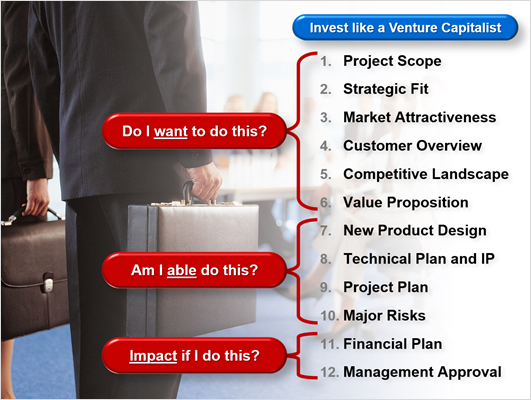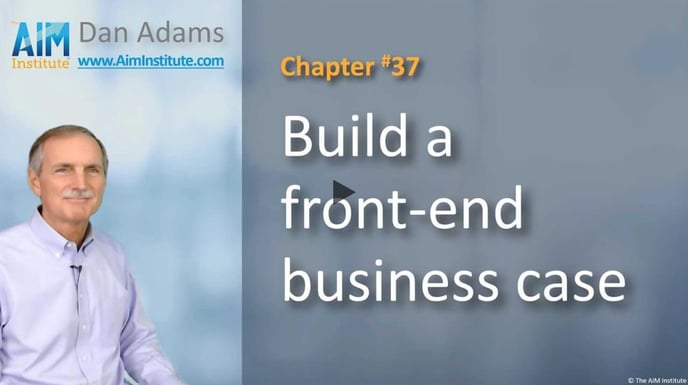Here are the 12 sections of the Business Case included in your Blueprinter software Step 7.
Your Business Case is the “Blueprint” for your new product. As with a new home, this Blueprint ensures the building phase is done fast, resources are used efficiently, and the end-product meets expectations. But improving the building phase is only half the job your Business Case should do.
The other half is helping your company’s management make wise investment decisions… often at that gate review meeting we talked about earlier. They have many choices: Some investments will lead nowhere. Others will lead to breakthrough products, with huge profits.
So, when your team presents its Business Case, how will management know which type of project yours is? Your Business Case contains 12 sections that cover the information a venture capitalist would want to see. Unlike corporations with ongoing business, all of a VC’s money is at risk with new ventures… so surviving VCs give us a good model to follow.
It’s important to present your information in a logical sequence. First, management needs to answer the question, “Do I want to do this?” If the answer is yes, the next question is “Am I able do this?” If still “yes,” they must know, “What’s the impact if I do this?”… because other projects may be more deserving of limited resources.

We won’t go into each of these sections here, but you’ll see complete suggestions for each of them in your Excel-based Blueprinter 4.0 software, Step 7. Note that you’ll enter your information in Step 7A… and then generate your 4-page, 12-section report in Step 7B.
You’ll also find much more assistance in creating your Business Case in e-Learning modules 30 and 31, at www.blueprintingcenter.com > e-Learning. You may also want to check out this 2-minute video from our B2B Organic Growth video series.
Keywords: Blueprinting Step 7: Business Case, end of front-end, gate to development stage, business case presentation, 12 sections of business case, 12 parts of business case, new product blueprint

